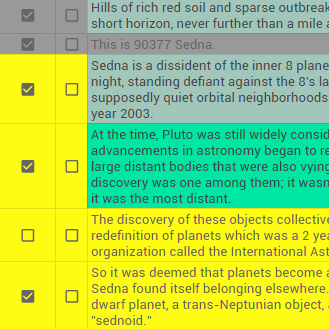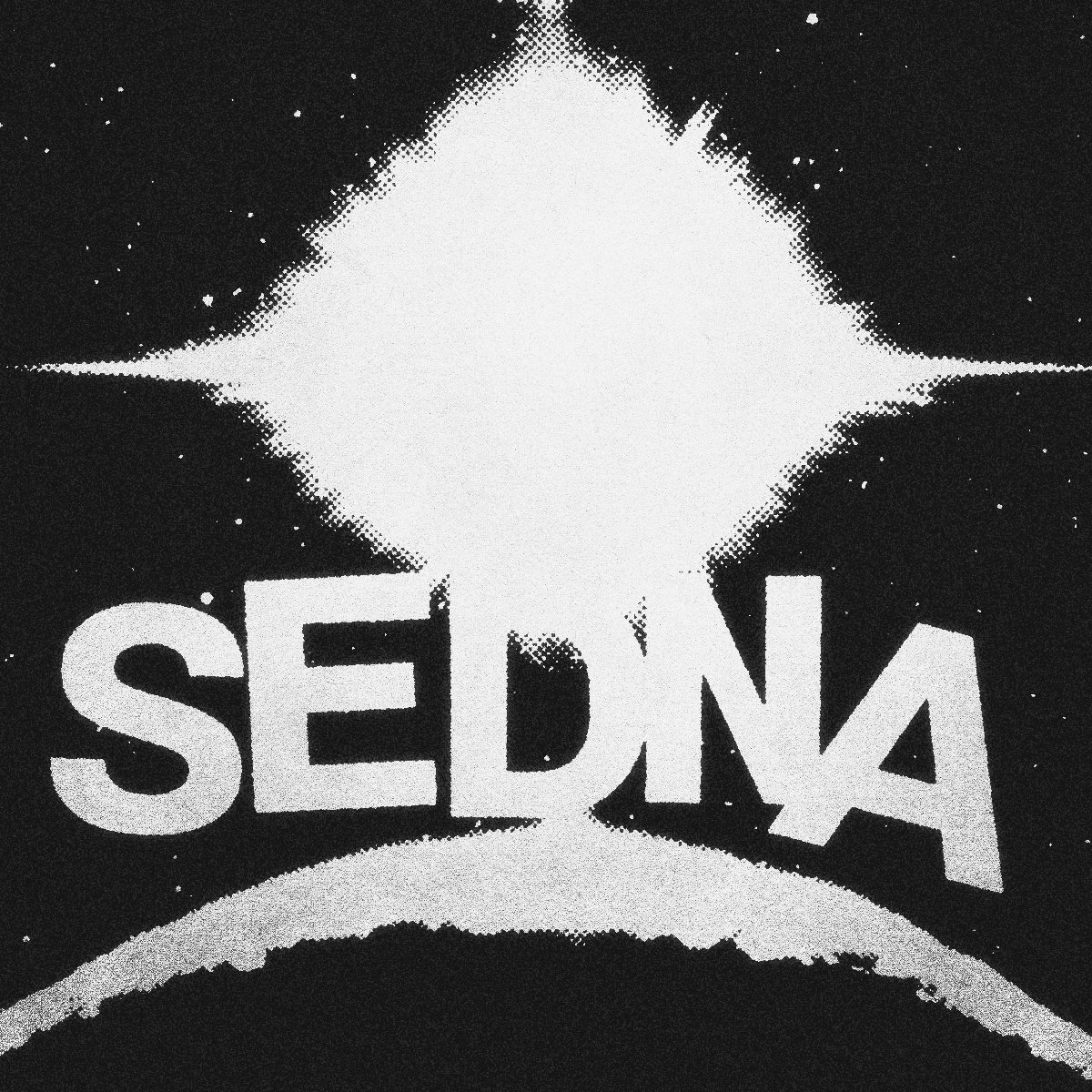The Mystery of Sedna’s Orbit
Quite far away, a lonely, red rock has something imprinted upon its mysterious orbit.
What secrets might it hold?
CORRECTIONS
The diagram at 4:00 mistakenly swaps the labels for sedna's periapsis and apoapsis.
(noticed by youtube viewer CatKhakis)
(noticed by youtube viewer CatKhakis)
— Citations —
Info.
1
"Sunrise is cold and brief here. There's a new one every 10 hours."
timecode 00:14
timecode 00:14
on the rotation period of (90377) Sedna
2018, Gaudi et al.
§ abstract
2018, Gaudi et al.
§ abstract
2
assumption: observer is 5' 9" tall
"a short horizon, never further than a mile away."
timecode 00:23
"a short horizon, never further than a mile away."
timecode 00:23
distance to horizon on Sedna
2022, WolframAlpha
§ results
2022, WolframAlpha
§ results
3
A
"Sedna was discovered in the year 2003."
timecode 00:55
timecode 00:55
B
"There are a few theories about Sedna's orbit and how it became so eccentric."
timecode 04:04
timecode 04:04
discovery of a candidate inner Oort cloud planetoid
2004, Brown et al.
A: publish date
B: § 4. Origin
2004, Brown et al.
A: publish date
B: § 4. Origin
4
... "advancements in astronomy started revealing exoplanets that defy expectations and distant local bodies roughly the size of Pluto, calling into question what exactly earns the title of planet. Sedna's discovery was one among them" ...
timecode 01:03
timecode 01:03
Planetesimals to Brown Dwarfs: What is a Planet?
2006, Basri & Brown
§ introduction
2006, Basri & Brown
§ introduction
5
"In 2015, Leleākūhonua was discovered, an even more distant object orbiting the Sun." ...
timecode 01:24
timecode 01:24
wiki: Leleākūhonua
Wikipedia
accessed 2022
§ summary
Wikipedia
accessed 2022
§ summary
6
"These objects collectively motived the 2006 redefinition of planets." ...
timecode 01:28
timecode 01:28
Results of the 2006 IAU Resolution votes
2006, IAU
¶ 4
2006, IAU
¶ 4
7
"And so it was deemed that planets are a more exclusive club. Pluto was shut out."
timecode 01:45
timecode 01:45
Breaking News– Pluto not a planet!
2006, Phil Plait
Slate
¶ 1
2006, Phil Plait
Slate
¶ 1
8
A
"It measures about a thousand kilometers in diamater across each dimension."
timecode 02:01
timecode 02:01
B
... "that's only one percent of Earth's orbital speed."
timecode 03:12
timecode 03:12
wiki: Sedna
Wikipedia
accessed 2022
A: § infobox ¶ physical characteristics
B: § orbit and rotation
Wikipedia
accessed 2022
A: § infobox ¶ physical characteristics
B: § orbit and rotation
9
"It can be found at 76 astronomical units."
timecode 02:34
timecode 02:34
sedna ephemerides for July 2076
2022, AstDyS
R value where "RA*cosDE" flips from negative to positive
2022, AstDyS
R value where "RA*cosDE" flips from negative to positive
10
"It accelerates to a speed of 4.6 kilometers every second" ...
timecode 02:53
timecode 02:53
sedna orbital speed at perihelion
WolframAlpha
accessed 2022
§ unit conversions
WolframAlpha
accessed 2022
§ unit conversions
11
Sedna "gradually slows to 0.37 kilometers per second at apoapsis."
timecode 03:03
timecode 03:03
sedna instantaneous heliocentric velocity at apoapsis
WolframAlpha
accessed 2022
§ results
WolframAlpha
accessed 2022
§ results
12
"This [apoapsis] is past the termination shock; past the heliopause; past Voyager 1; through interstellar space; and right on the cusp of the theorized Oort cloud's inner edge."
timecode 03:28
timecode 03:28
voyager goes interstellar
2013, NASA/JPL-Caltech
§ image
2013, NASA/JPL-Caltech
§ image
13
... Sedna's "orbit takes a long time. 11,000 Earth years" ...
timecode 05:10
timecode 05:10
horizons: barycentric osculating orbital elements for sedna
JPL/HORIZONS
accessed 2022
PR values (measured in days)
JPL/HORIZONS
accessed 2022
PR values (measured in days)
14
"The last time it reached perihelion, Earth was in an ice age."
timecode 05:24
timecode 05:24
scientists find an icy world beyond pluto, and the solar system suddenly seems bigger
2004, John Noble Wilford
The New York Times
accessed 2022
last line of article
2004, John Noble Wilford
The New York Times
accessed 2022
last line of article
15
"Sedna will reach its nearest approach by the year 2076."
timecode 05:38
timecode 05:38
horizons: sedna july 2076 batch
JPL/HORIZONS
accessed 2022
where "rdot" flips from negative to positive values
JPL/HORIZONS
accessed 2022
where "rdot" flips from negative to positive values
Media
m1 - timecode 04:34
sedna as seen by hubble
2004, NASA, ESA, and M. Brown (Caltech)
2004, NASA, ESA, and M. Brown (Caltech)
CREDITS
Brandt Hughes
research, writer, host, editor,
music production, sound design
research, writer, host, editor,
music production, sound design
MUSIC
Transcript
BONUS MATERIAL
Pledge now to see these behind the scenes exclusives!


